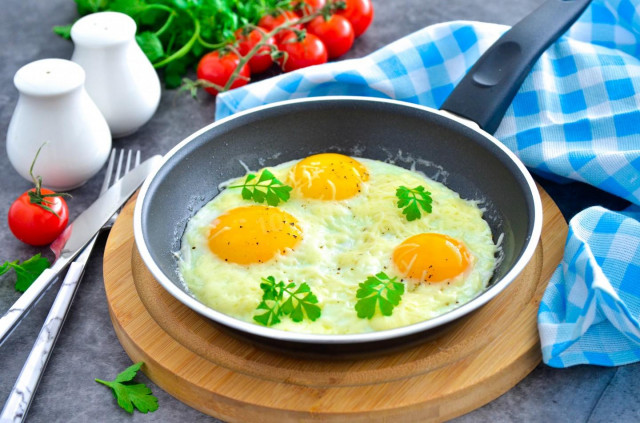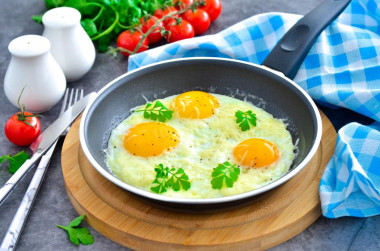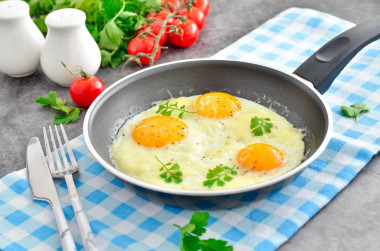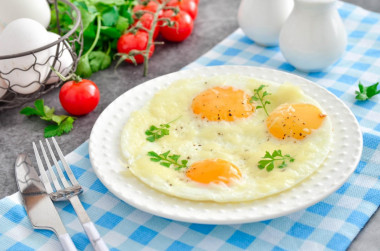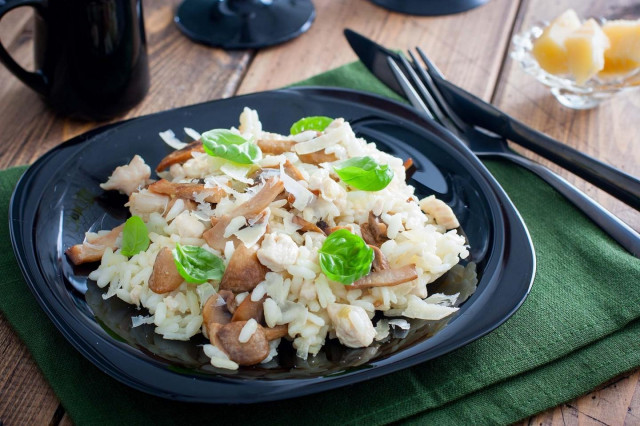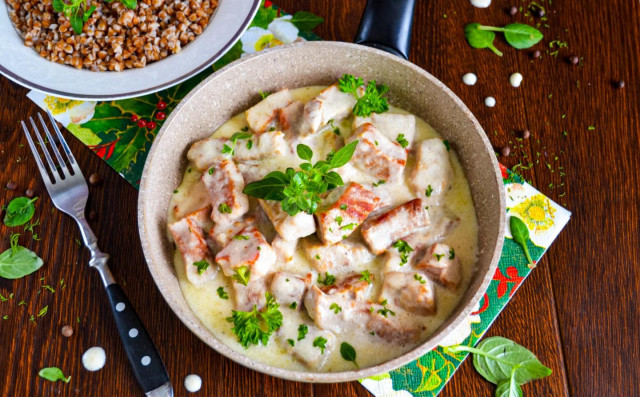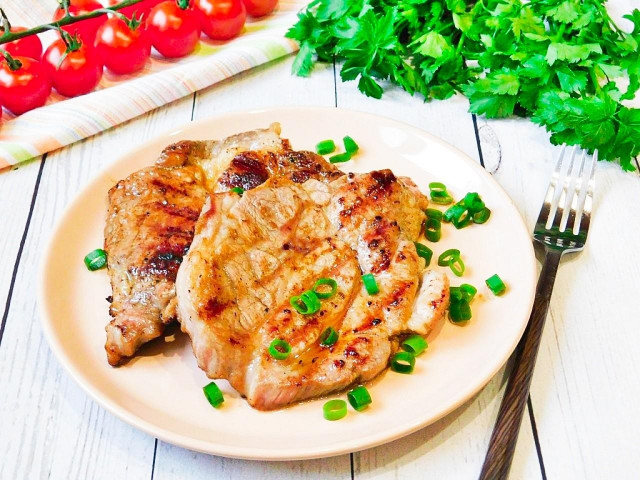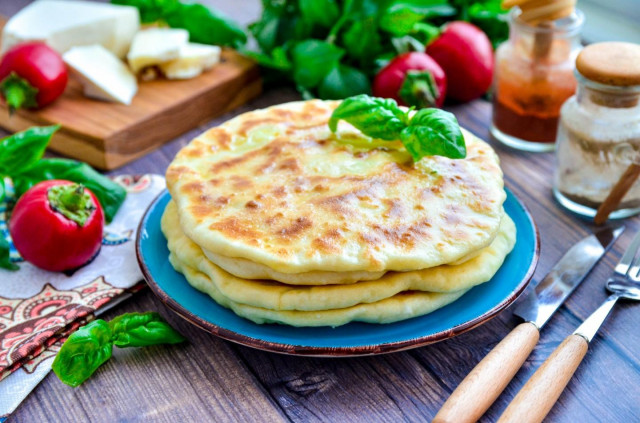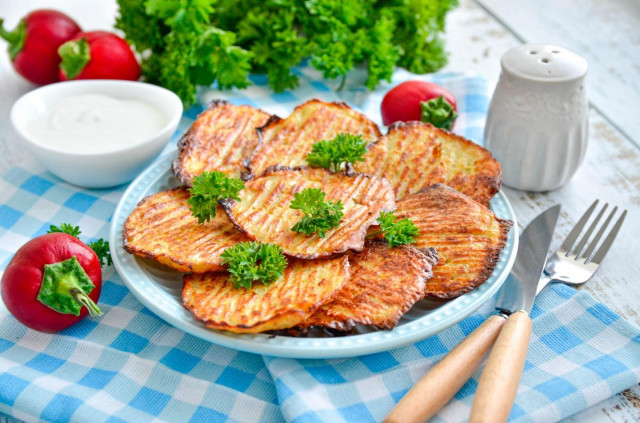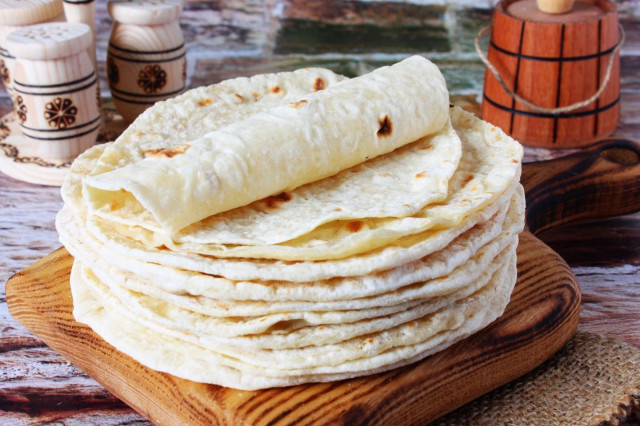Composition / ingredients
Step-by-step cooking
Step 1:
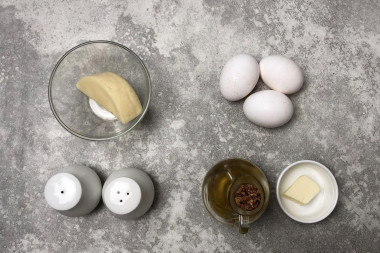
How to make scrambled eggs with cheese in a frying pan? Prepare the products. Two eggs are enough for one serving, but I only had small eggs, I took three. The cheese for the recipe is better suited to the one that melts well. Choose good quality cheese, without milk fat substitutes.
Step 2:
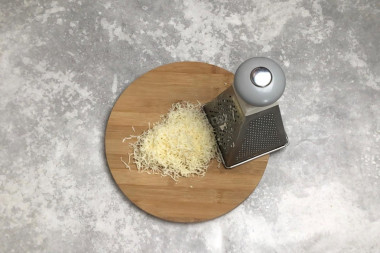
Grate the cheese. I chose the medium one, but you can rub it on a large one, as you like it better.
Step 3:
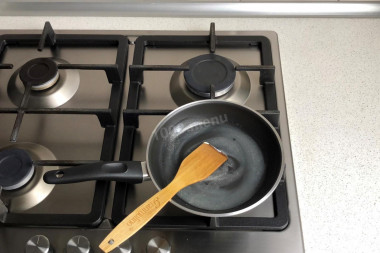
Take a frying pan of a suitable size. A frying pan with a diameter of 15-18 cm will be enough for one person. I have a frying pan with a non-stick coating, but generally any one will do. Melt the butter over low heat. And add a little vegetable. This is the first secret of a good scrambled egg. Butter can burn quickly. The addition of vegetable oil will prevent this, since it has a higher gorenje temperature. Heat the oil well.
Step 4:
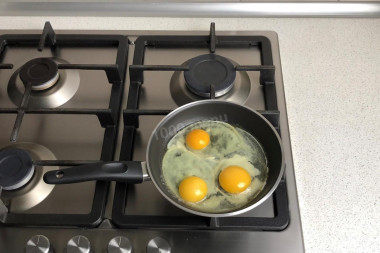
Break the eggs into the pan. I fry fried eggs, but you can mix the whites with the yolks, it's as you like.
Step 5:
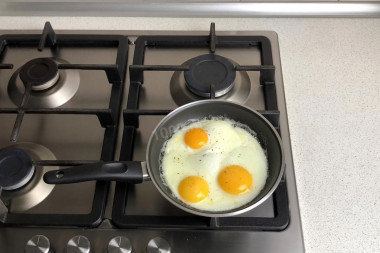
Make the smallest fire under the pan — this is the second secret of a successful glaze. On high heat, the protein will cook faster than the yolk and may start to burn. When the protein sets, add salt and pepper. Keep in mind that the scrambled eggs will be with salted cheese, do not over-salt. I like freshly ground pepper.
Step 6:
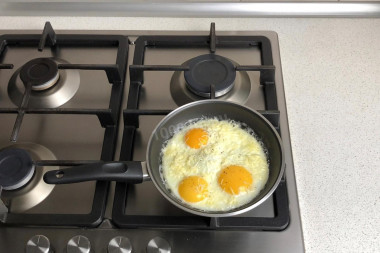
What will be the yolk in the finished scrambled eggs, you choose. I like liquid, but you can fry it harder, adjust it to your liking. When the yolks are almost ready, sprinkle the scrambled eggs with cheese. Fry the fried eggs for another 2-3 minutes, until the cheese melts. You can cover the pan with a lid, then the cheese will melt faster, but the yolk may turn white. I don't do that, I always fry without a lid. Sprinkle the finished scrambled eggs with herbs.
Serve the finished scrambled eggs either in a frying pan, or by transferring to a plate.
Be sure to wash the eggs before use, as even the seemingly clean shell may contain harmful bacteria. It is best to use food detergents and a brush.
How do I know if an egg is fresh? Break it into a separate container. First of all, there should be no unpleasant smell. The protein of fresh eggs will be transparent and clean. The yolk should not spread and will be shiny, convex, homogeneous.
Use oil with a high smoking temperature for frying! Any oils are useful only until a certain temperature is reached - the point of smoking, at which the oil begins to burn and toxic substances, including carcinogens, are formed in it.
Unrefined oils, with rare exceptions, have a low smoking point. There are a lot of unfiltered organic particles in them, which quickly begin to burn.
Refined oils are more resistant to heating, and their smoking point is higher. If you are going to cook food in the oven, on a frying pan or grill, make sure that you use oil with a high smoking point. The most common of the oils with a high smoking point: refined varieties of sunflower, olive and grape.
Caloric content of the products possible in the composition of the dish
- Dutch cheese - 352 kcal/100g
- Swiss cheese - 335 kcal/100g
- Russian cheese - 366 kcal/100g
- Kostroma cheese - 345 kcal/100g
- Yaroslavsky cheese - 361 kcal/100g
- Altai cheese 50% fat content - 356 kcal/100g
- Soviet cheese - 400 kcal/100g
- Cheese "steppe" - 362 kcal/100g
- Cheese "uglichsky" - 347 kcal/100g
- Poshekhonsky cheese - 350 kcal/100g
- Lambert cheese - 377 kcal/100g
- Appnzeller cheese with 50% fat content - 400 kcal/100g
- Chester cheese with 50% fat content - 363 kcal/100g
- Edamer cheese with 40% fat content - 340 kcal/100g
- Cheese with mushrooms of 50% fat content - 395 kcal/100g
- Emmental cheese with 45% fat content - 420 kcal/100g
- Gouda cheese with 45% fat content - 356 kcal/100g
- Aiadeus cheese - 364 kcal/100g
- Dom blanc cheese (semi-hard) - 360 kcal/100g
- Lo spalmino cheese - 61 kcal/100g
- Cheese "etorki" (sheep, hard) - 401 kcal/100g
- White cheese - 100 kcal/100g
- Fat yellow cheese - 260 kcal/100g
- Altai cheese - 355 kcal/100g
- Kaunas cheese - 355 kcal/100g
- Latvian cheese - 316 kcal/100g
- Limburger cheese - 327 kcal/100g
- Lithuanian cheese - 250 kcal/100g
- Lake cheese - 350 kcal/100g
- Gruyere cheese - 396 kcal/100g
- Ground black pepper - 255 kcal/100g
- Butter 82% - 734 kcal/100g
- Amateur unsalted butter - 709 kcal/100g
- Unsalted peasant butter - 661 kcal/100g
- Peasant salted butter - 652 kcal/100g
- Melted butter - 869 kcal/100g
- Vegetable oil - 873 kcal/100g
- Salt - 0 kcal/100g
- Fresh frozen soup greens in a package - 41 kcal/100g
- Greenery - 41 kcal/100g
- Chicken egg - 80 kcal/100g

